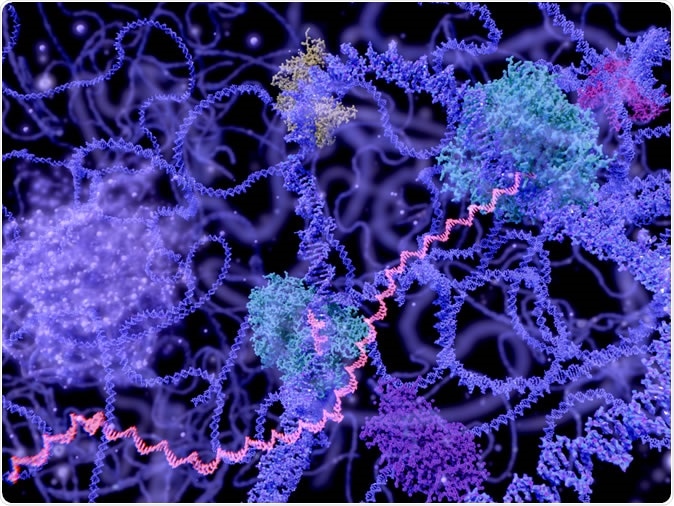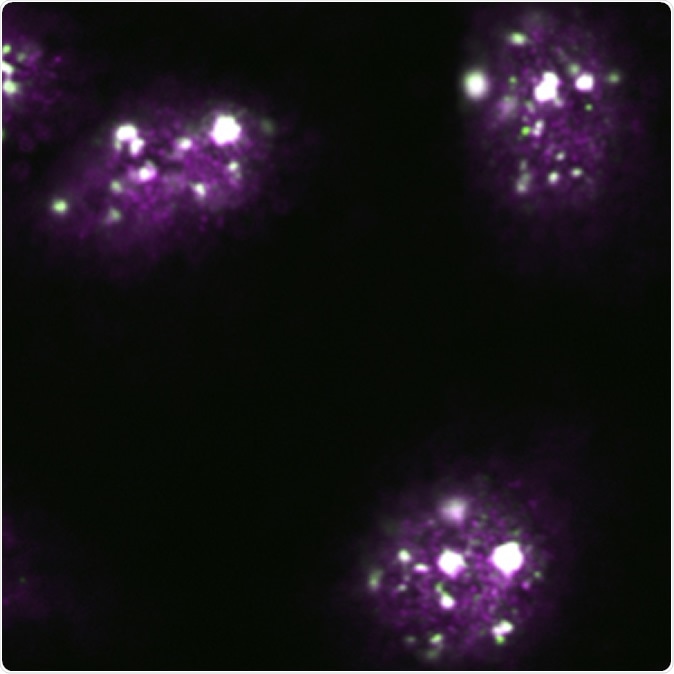
Scientists uncover functions of mysterious organelles in stress response
Stress is a normal response to physical and emotional stimuli, particularly when people face changes in their lives. Though it’s a normal feeling, long-term stress may lead to a range of health conditions. Though people feel stressed from time to time, not all stress is bad.
For decades, scientists are studying the stress response of the body and how it affects overall health. Now, a team of researchers at the Hokkaido University, have begun to reveal the functions of mysterious organelles in the nucleus, called nuclear stress bodies, and how it is tied to stress. They found that non-coding RNA has a new role in the fine-tuning gene expressions during stress recovery, with more information on the mystery scientists have been studying for about three decades.
The study, which was published in The EMBO Journal, the cells’ exposure to chemical or heat stress led to the formation of nuclear stress bodies. On the other hand, when all the stress is gone, and conditions went back to normal, the organelles promote the retention of RNA segments, dubbed as introns.

View of the cell nucleus in the interphase (DNA, mRNA, nucleolus and several enzymes) - Illustration Credit: Juan Gaertner / Shutterstock
In the body, many biological functions and processes are regulated by the retention of introns, which includes cell division, preventing the buildup of damaged DNA, learning and memory, tumor growth, and stress response. These nuclear stress bodies are also responsible for assembling a type of long non-coding RNA in response to chemical and heat stress.

Nuclear stress bodies (white) formed in response to heat stress. Image Credit: Hokkaido University
Functions of nuclear stress bodies
The team of researchers, wherein some are experts in non-coding RNAs, which are molecules copied from DNA but were not translated into proteins, and they studied the various functions of nuclear stress bodies by switching off the long non-coding RNA, hence, removing them from human cells.
Further, the investigators discovered that when they removed the nuclear stress bodies, it led to a major suppression of intron retention during stress recovery. The results of their findings shed light on how this nuclear stress bodies aid in stress recovery when they’re present.
The other findings of the study include that heat stress at about 42°C resulted in the de-phosphorylation of slicing factors named SRSFs, resulting in the production of mature RNA molecules and removal of certain introns. At the same time, the de-phosphorylated SRSFs were combined in the nuclear stress bodies. When the cells were able to return to the normal temperature of the body at 37°C, nuclear stress bodies, which are unique subnuclear organelles that form in response to heat shock, get an enzyme to re-phosphorylate SRSFs, which, in turn, restores intron retention to normal levels abruptly.
In stressed cells, nuclear stress bodies are thought to participate in fast and transient reprogramming of gene expression through various mechanisms, such as trapping of transcription and splicing factors, and chromatin remodeling.
"Nuclear stress bodies probably function to fine-tune gene expressions by rapidly restoring the proper levels of intron-retaining messenger RNAs as the cell recovers from stress,” Tetsuro Hirose, a Molecular biologist, at the Hokkaido University's Institute for Genetic Medicine.
The researchers want to conduct further studies to unveil the specific effects of intron retention after heat stress. They also want to further understand the mechanism involved in the process.
What are nuclear stress bodies?
Nuclear stress bodies or nSBs, were first found in the late 1980s. They were later linked to the cellular response to stressors and are transient subnuclear organelles unique from their nuclear bodies.
Experiments and studies revealed the strange and multifaceted organization of nSBs, wherein they appear as highly electron-dense structures that are more often adjacent to chromatin blocks.
In the past, the major function of nSBs was still unknown, but they are known to be rarely detectable in unstressed cells, and they proliferate after heat shock.
Source:
Fine-tuning gene expression during stress recovery - https://www.global.hokudai.ac.jp/blog/fine-tuning-gene-expression-during-stress-recovery/
Journal reference:
LncRNA‐dependent nuclear stress bodies promote intron retention through SR protein phosphorylation, Kensuke Ninomiya, Shungo Adachi, Tohru Natsume, Junichi Iwakiri, Goro Terai, Kiyoshi Asai, Tetsuro Hirose, The EMBO Journal (2019) e102729, https://doi.org/10.15252/embj.2019102729

No comments:
Post a Comment